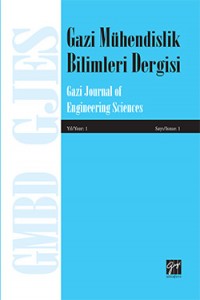Abstract
Enerji bütün ülkeler için önemli bir parameterdir ve dikkatlice planlanması gerekir. Dünyada
ülkelere bağlı olarak, konut amaçlı binalardaki HVAC donanımları tarafından tüketilen enerji
toplam enerji tüketiminin % 16 ila % 50’si aralığındadır. Bu enerji çoğunlukla merkezi ısıtma
tesisatlarında (MIT) ısıtma için kullanılır. Binaların MIT tasarımı enerjin rasyonel kullanımı
açısından çok önemlidir. MIT’ların tasarımları genellikle enerji dengesine (I. Kanun)
yapılmaktadır. Ancak sistem performansının değerlendirilmesinde, sadece I. Kanun yeterli
olmayıp, II. Kanun analizinin de yapılması gerekmektedir. Bu çalışmada Türkiye, Ankara’da
80.000 m2’lik bölümünde ısıtma ihtiyacı olan bir alışveriş merkezinin ısıtma sistemi üzerinde
yaklaşık 3 yıl süren deney ve verilerinden faydalanarak enerji ve ekserji analizi yapılmıştır.
Analizler sonucunda, ısıtma sistemi için yapılan enerji analizinde; en düşük verimin eşanjörde, en
yüksek verimin kazanda, ekserji analizinde ise bunun tersi bir durum görülmüştür. Bu sonuçlar
neticesinde; bu tür çok amaçlı yapılarda enerji performansının değerlendirilmesinde, ekserji
analizinin, enerji analizine göre daha gerçekçi olduğu ve kazanda yapılacak iyileştirmenin sistem
performansının arttıracağı belirlenmiştir.
Abstract
The energy is an important parameter for all countries and the usage of it needs to be
planned carefully. In the world, energy consumption HVAC equipment in residential buildings
ranges between 16% and 50% of total energy consumption, depending on the countries. This
energy is mostly used by central heating systems (CHS) for heating. Design of CHS in buildings is
very important in terms of rational energy usage. CHS’s are generally designed using energy
analysis (First Law). However this analysis is not adequate itself, so second law analysis is also
required for evaluation of system performance. In this study, energy and exergy analyses of a
heating system are performed using the data and experiments of 3 years in a multipurpose
building (a shopping center) which needs heating in an area of 80.000 m2 in Ankara, Turkey. As a
result of the energy analysis, it is shown that the lowest efficiency is in the heating exchanger,
and the highest efficiency is in the boiler. On the other hand, there is an opposite situation for
exergy analysis. These results indicate that exergy analysis is more realistic than energy analysis,
and system performance can be increased by improving the boiler.
Details
| Other ID | JA54UB79AF |
|---|---|
| Journal Section | Articles |
| Authors | |
| Publication Date | March 1, 2015 |
| Submission Date | March 1, 2015 |
| Published in Issue | Year 2015 Volume: 1 Issue: 1 |



